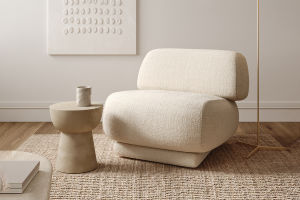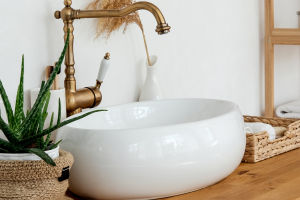
Indoor Plant Perfection

Spending more time indoors has sped up many trends. There's a simple way to enhance your well-being: bring nature inside your home.
The allure of indoor greenery is no mystery. In spaces filled with artificial materials, indoor potted plants offer a soothing connection to the natural world.
They evoke distant gardens and landscapes that may be difficult to access these days. Plus, they can act as substitutes for the friends we used to entertain in our homes.
Incorporating plants into your living space can be trickier than it seems. They may wither and die, or even if they survive, they might not look as good in your home as they do on social media. So, what's the secret to successfully introducing plants into your living space?
Related
 Maintaining beauty and hygiene: Clean your makeup brushes to extend their life and avoid skin issues.
Maintaining beauty and hygiene: Clean your makeup brushes to extend their life and avoid skin issues.
 The art of interior design: crafting spaces that stir emotions, blending colors, and forms to create unique, delightful havens.
The art of interior design: crafting spaces that stir emotions, blending colors, and forms to create unique, delightful havens.
 Muji style: Rustic serenity, nature's embrace.
Muji style: Rustic serenity, nature's embrace.
 Embrace your pets as cherished companions, but choose sofa fabrics wisely for a harmonious, pet-friendly home.
Embrace your pets as cherished companions, but choose sofa fabrics wisely for a harmonious, pet-friendly home.
 Essential oil quality goes beyond purity, influenced by botanical sources, production methods, usage, and more. Choose wisely!
Essential oil quality goes beyond purity, influenced by botanical sources, production methods, usage, and more. Choose wisely!
 From these 4 aspects of anti-aging, essential oils help you "reverse growth"!
From these 4 aspects of anti-aging, essential oils help you "reverse growth"!
Many houseplants suffer because they're placed in environments that don't suit them. Just because you see a thriving Ficus lycopersicum in a magazine doesn't guarantee it will flourish in your living room.
The most crucial advice is to evaluate the lighting in your home, as light is paramount for plant happiness. Light surpasses both watering and fertilizing in importance; it's the plant's equivalent of food for humans.
Examine the orientation of your home's windows. South-facing windows receive the most direct sunlight, while east- or west-facing windows get partial light. North-facing windows, however, receive little to no sun, making it the most challenging place for greenery.

With the guidance of a nursery or a greenery expert, select the best plants for your home's lighting conditions. For example, desert plants like cacti and succulents thrive in locations with constant direct sunlight throughout the day.
Be realistic about your plant care habits. Are you too eager to water daily, or do you forget to water for months? Understanding your tendencies is vital for plant health.
To start, choose a striking plant for instant gratification. A tall ficus lycopersicum can adorn your living room or any plant with impressively large leaves can do the trick. As you add more plants, arrange them in clusters instead of scattering them individually.
If you have only a few plants, group the pots in odd numbers, like three or five. They don't need to match; in fact, a bit of variety often enhances the overall look.
Consider placing plants at different heights in front of a wall to create the illusion of a lush garden. Alternatively, hang them in layers on the wall.
Some home gardeners display their plants in wooden baskets with test tubes inserted, while others hang aerial plants on wall hooks or mount antler ferns directly on wooden boards as wall decorations.
While the plants take center stage, the choice of containers also plays a significant role. Picking planters randomly can create a messy look. You can opt for planters with similar colors or those made from the same material or fabrication technique.
Some people place their plants in plastic pots from the nursery and then put them in larger terra cotta containers. Plastic planters come with ample drainage holes and are easy to move to the sink for watering.
Incorporating nature into your living space can be rewarding and straightforward when you consider lighting, choose the right plants, and pay attention to your plant care habits.
Plus, it adds a touch of green and tranquility to your home, making it a more pleasant and inviting place to be.